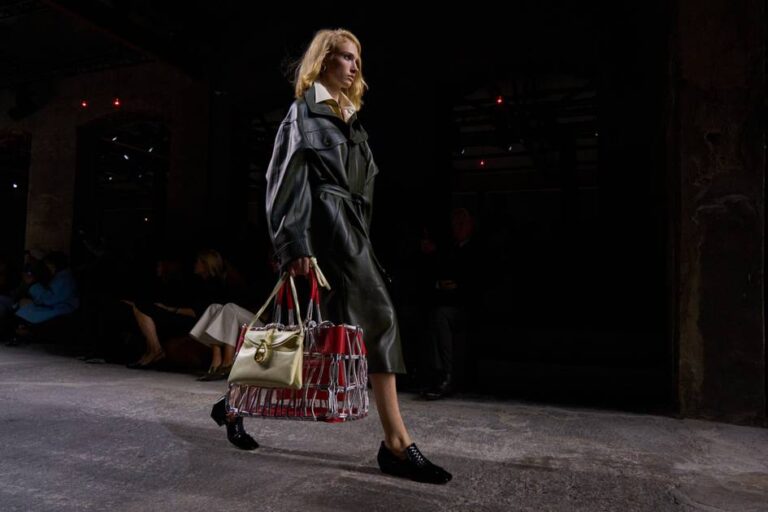As 2025 approaches, the luxury market faces significant challenges that could reshape its trajectory. A combination of economic, political and consumer-driven factors are likely to influence demand, innovation and growth in this highly competitive sector.
Uncertainty in the market
The global luxury industry is navigating a period of significant economic unpredictability, driven by uneven growth in key regions and shifts in consumer spending patterns. Political developments, such as possible tariff measures in the US, contribute to this uncertainty. For example, proposals for increased duties on European goods could disrupt the revenue streams of major luxury players. Such headwinds could cause brands to rethink their pricing and supply chain strategies to maintain profitability in key markets.
The impact of this uncertainty is particularly noticeable in emerging markets, where currency volatility and changing regulations pose additional challenges. Luxury houses are responding by implementing more sophisticated hedging strategies and diversifying their production bases. This includes setting up manufacturing facilities in strategic locations to mitigate supply chain risks and reduce exposure to single market vulnerabilities. Companies such as Hermès and Chanel are at the forefront of this trend, with significant investments in artisan workshops across multiple regions.
Luxury resale is gaining momentum
Sustainability and affordability are driving a boom in the second-hand luxury market. Consumers, especially young people, are turning to second-hand platforms as a way to align luxury consumption with environmentally conscious values. This trend is challenging traditional notions of exclusivity as second-hand luxury items become more mainstream. Brands are starting to integrate this segment into their operations, offering buyback programs or partnering with resale marketplaces to respond to changing customer preferences.
The maturation of the resale market has led to advanced authentication technologies and service offerings. Blockchain-based authenticity certificates and AI-driven condition assessment tools are increasingly becoming the industry standard. Major luxury conglomerates are also exploring innovative ownership models, including fractional ownership and subscription services for high-value items, recognizing that traditional ownership paradigms may not reflect next-generation luxury consumers.
The influence of political developments
Political factors are playing an increasingly important role in shaping the luxury landscape. Trade policies, such as proposed tariffs on European goods, could force brands to make difficult choices between absorbing costs or raising prices. In addition, ongoing regulatory changes and geopolitical tensions in key markets such as China are creating an environment where strategic flexibility will be crucial for global players to maintain market share.
The industry is seeing increasing scrutiny of supply chains and production practices, particularly in relation to working conditions and environmental impacts. This has prompted luxury brands to invest heavily in transparency initiatives and sustainable production methods. Some houses are working with government agencies to develop industry-wide standards for ethical luxury production, recognizing that political alignment with sustainability goals is becoming as crucial as traditional brand positioning.
Changing consumer behavior
The modern luxury consumer is redefining the industry. Sustainability, personalization and digital engagement are increasingly important drivers of purchasing decisions. Consumers are looking for unique experiences and gravitate toward brands that reflect their personal values. To keep pace, companies are investing in advanced technologies like AI and experimenting with digital platforms, including the metaverse, to create customized, immersive experiences.
The rise of social commerce and influencer marketing has fundamentally changed the way luxury brands connect with their audiences. Virtual trying-on, augmented reality shopping experiences and AI-powered personal styling services are becoming standard offerings. Luxury houses are also exploring Web3 technologies to create exclusive digital communities and rewards programs, recognizing that the future of luxury lies at the intersection of physical craftsmanship and digital innovation.
A slowdown in overall demand
Global demand for luxury items appears to be moderating as economic challenges and shifting consumer priorities take center stage. Analysts warn that growth in the sector could be limited in the short term, with many companies having to adapt their business models to stay relevant. Diversification, digital innovation and strategic investments in emerging markets are likely to be key to sustaining growth amid these headwinds.
This slowdown is leading to a strategic shift toward value creation through experience and service rather than just the product. Luxury brands are expanding their hospitality offerings, creating members-only spaces and developing extensive lifestyle ecosystems. This shift reflects a broader understanding that future growth may depend more on deepening relationships with existing customers than expanding the customer base, leading to more sophisticated customer retention strategies and personalized services.
This article previously appeared on FashionUnited.UK. This article was translated by Sylvana Lijbaart using an AI tool called Gemini 1.5.
FashionUnited uses AI language tools to speed up the translation of (news) articles and proofread the translations to improve the end result. This saves our human journalists time that they can spend on research and writing their own articles. Articles translated using AI are checked and edited by a human desk editor before going online. If you have any questions or comments about this process, please email info@fashionunited.com.


